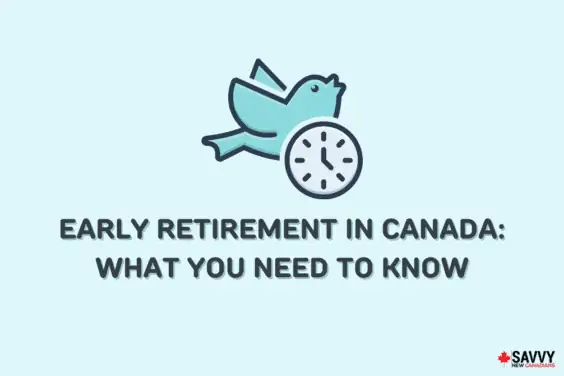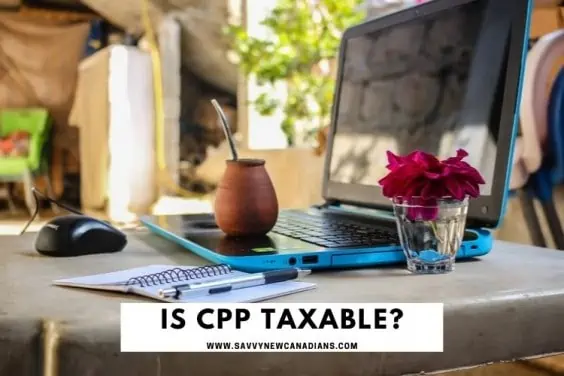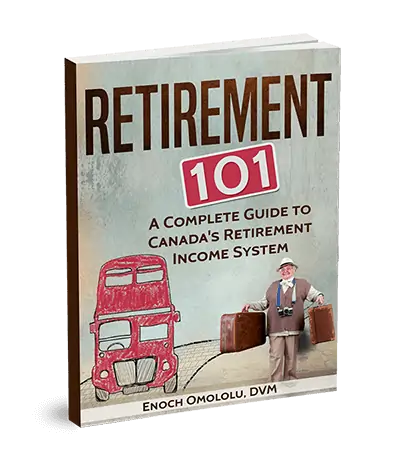Registered Retirement Savings Plans (RRSPs) are one of the main investment accounts Canadians use to save for retirement.
While an RRSP grows tax-free during your accumulation years, taxes become due when you start making withdrawals.
Read on to learn about the taxes you pay on your RRSP after age 65.
Tax on RRSP Withdrawals After 65
Whether you start withdrawing from your RRSP at age 65 (standard retirement age) or earlier, funds withdrawn from your RRSP count as taxable income in the year it is received.
Your financial institution levies a withholding tax based on the amount you withdraw and your province of residence.
The withholding tax is:
| RRSP Withdrawal | Tax Withheld Outside Quebec | Tax Withheld in Quebec |
| $0 to $5,000 | 10% | 5% |
| $5,001 to $15,000 | 20% | 10% |
| $15,001 and over | 30% | 15% |
Residents of Quebec also pay a provincial tax.
You must report RRSP withdrawals as income on your tax return. Depending on your overall income for the year and tax bracket, you could owe additional taxes.
If, after applying tax credits and deductions, your marginal tax rate is lower than the withholding tax used by your bank, you may be due a tax refund.
Although RRSP withdrawals can occur at any age, there are potential disadvantages to taking money out earlier, including:
- You lose the RRSP contribution room for life.
- You pay a higher tax rate on the withdrawal than you would normally pay when you are retired and have a lower income.
- You lose the compounding effect of tax-deferred contributions that help your nest egg grow faster.
RRSP Withdrawal Options at Age 65
At age 71, your RRSP matures, and you are required to close it and do one or more of the following:
Cash out: You can withdraw all or a portion of your RRSP as cash. You will pay taxes on this withdrawal immediately, and it is also included in your taxable income for the year.
Convert RRSP to RRIF: You can transfer your RRSP assets to a Registered Retirement Income Fund (RRIF). Investments in an RRIF continue to grow on a tax-deferred basis; however, you must withdraw a minimum amount each year,
Purchase an annuity: You can buy an annuity that pays out guaranteed income for life or for a specific period. Tax is not withheld on the amount you use to buy an annuity, but the periodic payments are included in your taxable income.
You can make any of these moves with your RRSP before age 65, at age 65, or after.
Taxes on RRIF Withdrawals
RRIF withdrawals are included as income on your tax return and are taxed at your marginal tax rate.
Your financial institution will apply a withholding tax of 10% to 30% on RRIF withdrawals exceeding the minimum amount (or 5% to 15% in Quebec).
This tax is paid to the CRA on your behalf and will count as a credit (installment tax) towards any income tax you owe when filing your income tax return.
How To Minimize RRSP Taxes At Age 65
Below are some factors you should consider for getting the most out of your RRSP and pension benefits.
Consider chatting with a licensed financial advisor to assess your options.
It may make sense to withdraw RRSP funds early, before age 65, if it helps maximize your CPP and OAS benefits by delaying them till later. You will take an immediate tax hit on the withdrawal and can invest the excess funds in your TFSA if you have contribution room.
You could convert your RRSP to an RRIF earlier to take advantage of the pension income tax credit.
RRIF withdrawals qualify for this tax credit, which can help you save up to $300 in several taxes each year.
There are also provincial pension income tax credits on eligible pension income.
Another advantage of RRIFs is that you can split RRIF income with a spouse, and you can both take advantage of the pension income tax credit.
TFSA withdrawals are not included in your taxable income and do not impact income-tested benefits like the OAS and Guaranteed Income Supplement (GIS).
If you are in a low-income tax bracket during your working years, it may make sense to first contribute the maximum to your TFSA before making RRSP contributions.
Plan your RRSP/RRIF income withdrawals so that your overall taxable income stays below the next upper tax bracket or is below the level at which OAS clawback occurs.
If you are in a higher income tax bracket than your partner, you could consider contributing to a spousal RRSP to lower your family’s overall tax burden.
FAQs
You can withdraw RRSP funds without paying taxes under the Home Buyer’s Plan and Lifelong Learning Plan programs. You will need to re-contribute the amounts withdrawn later.
An RRSP withholding tax is charged when you withdraw from your RRSP. Outside of Quebec, the RRSP withholding tax is 10% on amounts below $5,000, 20% on amounts between $5,000 and $15,000, and 30% for withdrawals over $15,000.
Yes, you could be taxed twice on RRSP withdrawals. A withholding tax is charged immediately, and you may also owe taxes when you file your tax return at tax time if your marginal tax rate exceeds the withholding tax you have already paid.
You can withdraw from your RRSP at any age and before you turn 65.





